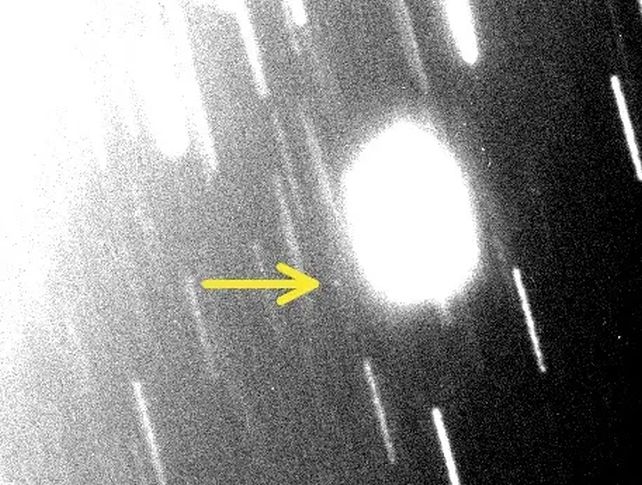ARTICLE AD
Jupiter and Saturn need to step aside with their moon-hogging ways. The outer planets of the Solar System have also been harboring secret satellites.
Using ground-based telescopes, astronomers have discovered three previously unknown moons in the space around Uranus and Neptune; one orbiting Uranus, and two around Neptune. That brings Uranus' official moon count to 28, and Neptune's to 16.
The moons have yet to be officially named, but in keeping with moon-naming conventions for both planets, the new Uranian moon will be given a name from Shakespeare's works and the Neptunian moons names after Nereid sea goddesses from Greek mythology.
"The three newly discovered moons are the faintest ever found around these two ice giant planets using ground-based telescopes," says astronomer Scott Sheppard of the Carnegie Institution for Science. "It took special image processing to reveal such faint objects."
New moons – as in, moons we didn't know about before – aren't rare discoveries in modern astronomy. As our technology and techniques for studying space grow ever stronger, so too does our ability to find small, dim things that were beyond our previous reach.
In recent years, Jupiter and Saturn have dominated the moon race, while Neptune and Uranus have gone sadly neglected; a tale as old as Solar System exploration, to be honest. The two outer ice planets are far from Earth, which makes them more difficult to travel to and more difficult to see with telescopes, which means our understanding of them is a lot more limited than the other five worlds closer to Earth.
The flip side of this coin is that there are probably a lot of moons out there waiting to be discovered, as evidenced by the three newly discovered satellites. All three moons have wide, eccentric, and inclined orbits, which makes them harder to spot. These orbits are consistent with a capture origin – snared by the planet's gravity and kept in a strange looping dance around it.
The new Uranian moon, first spotted in observations using on of the Magellan telescopes in November 2023, was confirmed by finding it in data dating back to 2021. It's been provisionally named S/2023 U1, and it's the first new Uranian moon discovered in more than 20 years.
It's around 8 kilometers (5 miles) across, which makes it the smallest of Uranus' moons, and one of the smallest known moons in the Solar System. It has an orbital period of 680 days.
The brighter of the two Neptunian moons, provisionally designated S/2002 N5, was first spotted in Magellan observations in September 2021 and then again in October, with follow-up observations in 2022 and 2023.
"Once S/2002 N5's orbit around Neptune was determined using the 2021, 2022, and 2023 observations, it was traced back to an object that was spotted near Neptune in 2003 but lost before it could be confirmed as orbiting the planet," Sheppard says.
It measures 23 kilometers (14.3 miles) across, and has an orbital period of 9 years.
 Uranus' newly discovered moon, S/2023 U1. (Scott Sheppard)
Uranus' newly discovered moon, S/2023 U1. (Scott Sheppard)Finally, the smaller, fainter new Neptunian moon was spotted in 2021 using the Subaru telescope. It has been provisionally named S/2021 N1, and measures 14 kilometers (8.7 miles) across with an orbit of 27 years around Neptune.
The newly discovered moons suggest that Uranus and Neptune have outer moon populations in configurations similar to those of Saturn (146 known moons) and Jupiter (95 known moons). This suggests that the method whereby these moons were obtained is similar across all the giant worlds in the Solar System.
"Even Uranus, which is tipped on its side, has a similar moon population to the other giant planets orbiting our Sun," Sheppard says. "And Neptune, which likely captured the distant Kuiper Belt object Triton – an ice rich body larger than Pluto – an event that could have disrupted its moon system, has outer moons that appear similar to its neighbors."
Capture may have been the first step, but the new moons fall into groupings of moons that have similar orbits. S/2023 U1 falls into step with Caliban and Stephano. S/2002 N5 fits with Sao and Laomedeia, and S/2021 N1's orbit is consistent with those of Psamathe and Neso.
None of the orbits are exactly alike, but the similarities suggest that each of these moon groupings could have started off as one whole moon that was captured by planetary gravity before breaking apart, each of the pieces then working out their own orbital paths.
If this is the case, there could be much smaller moons that we can't yet resolve in each of the groupings. It's a discovery that constitutes one more compelling reason out of many to send a dedicated probe to the outer Solar System.

 11 months ago
63
11 months ago
63 

